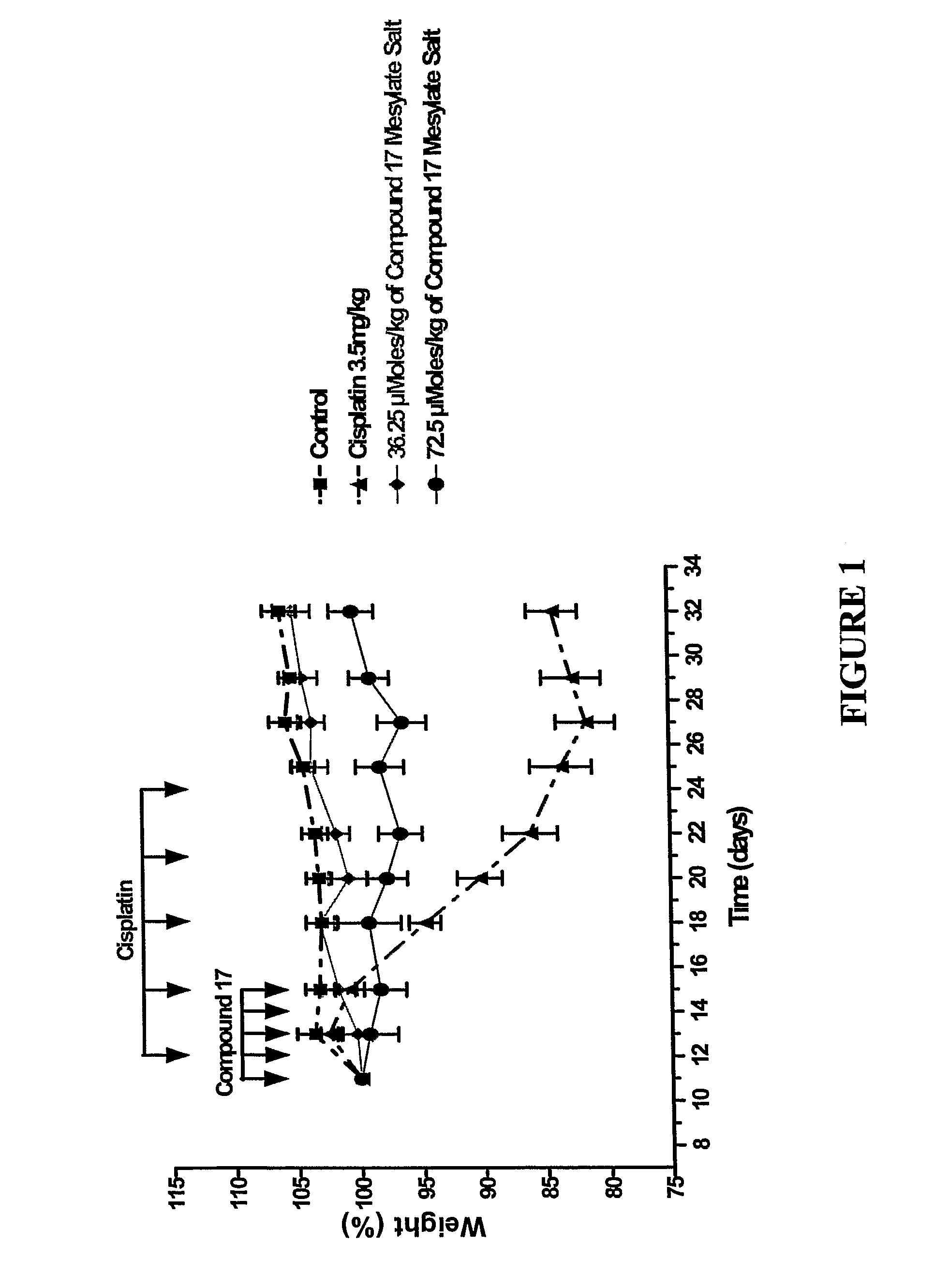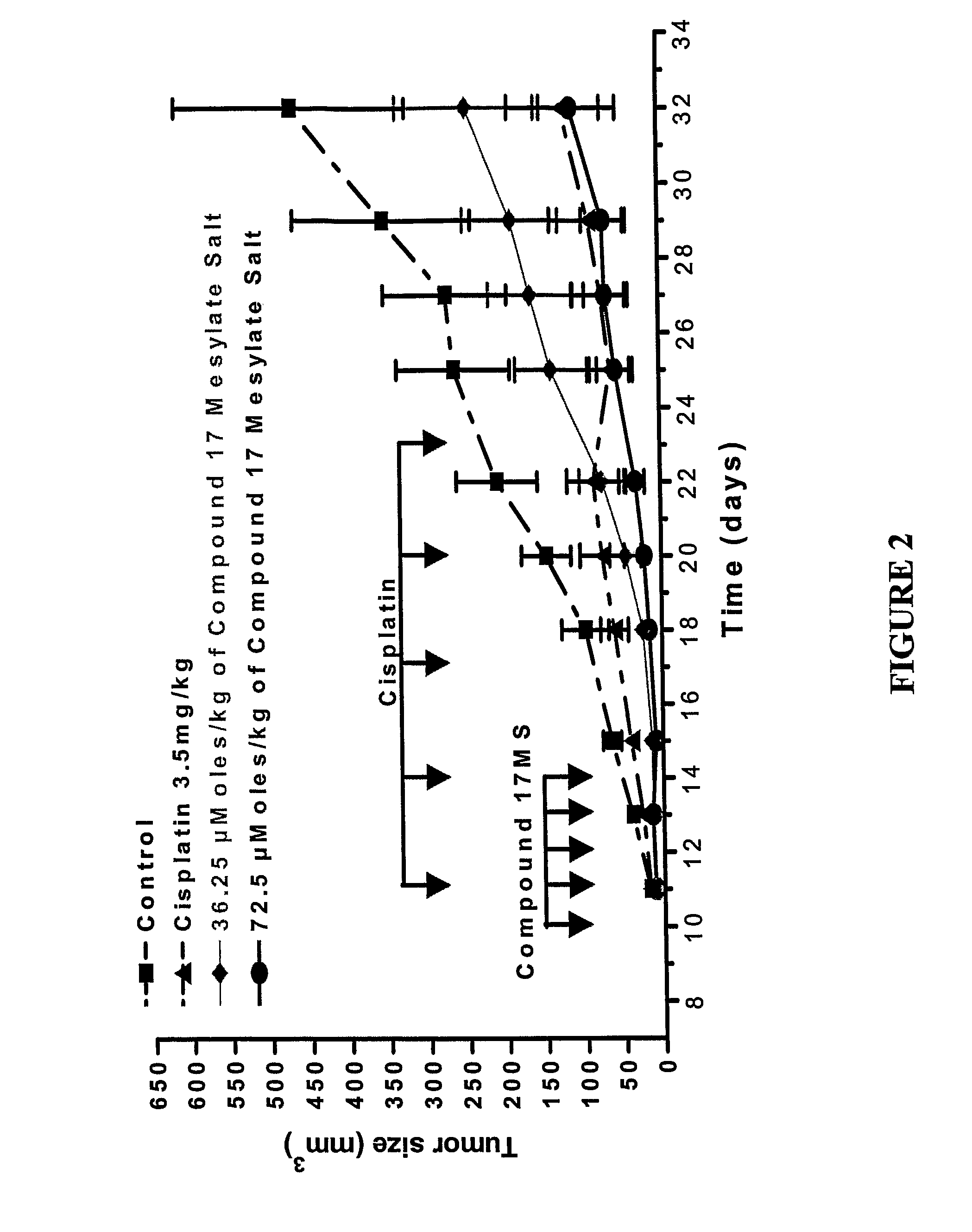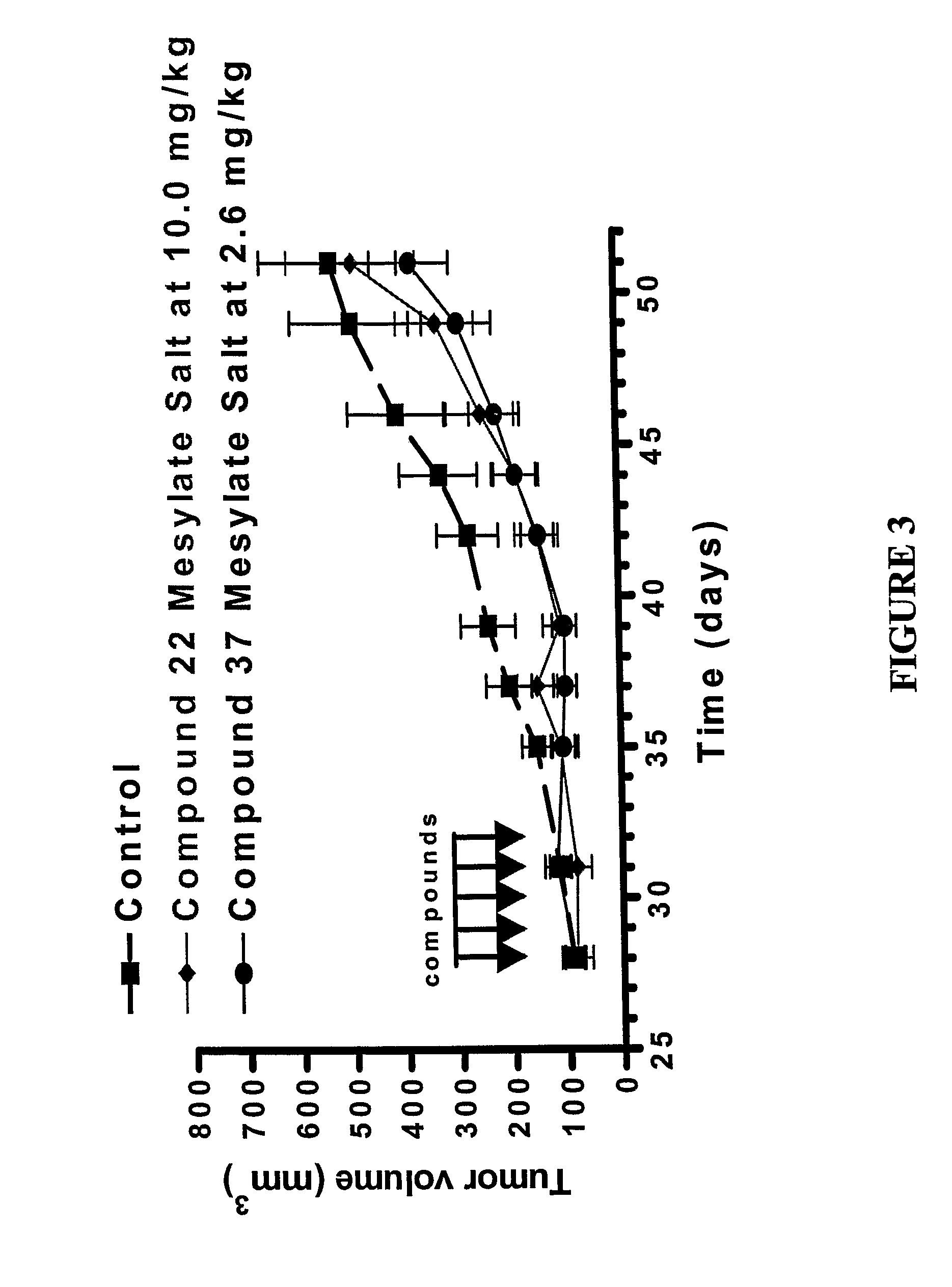Dipyrrole compounds, compositions, and methods for treating cancer or viral diseases
a technology of dipyrrole and compound, which is applied in the direction of drug compositions, heterocyclic compound active ingredients, biocide, etc., can solve the problems of radiation therapy and other serious side effects, surgery may not completely remove the neoplastic tissue, and the applicability of the procedure is difficult to achieve, so as to prevent the recurrence, development or onset of the infection, and reduce or ameliorate the severity and/or duration of the viral infection. , to
- Summary
- Abstract
- Description
- Claims
- Application Information
AI Technical Summary
Benefits of technology
Problems solved by technology
Method used
Image
Examples
example 1
6.1 Example 1
Synthesis of Compound 22
[0332]Referring to Scheme 3, to a solution of the triflate (48) (10.0 g, 2.84 mmol) and 4-dimethylaminophenyl boronic acid (49) (0.928 gm, 5.69 mmol) in anhydrous dioxane (25 mL), 4M solution of K2CO3 (7.11 mL, 28.47 mmol) was added. The solution was degassed for 10 min and then tetrakis(triphenylphosophine) palladium (0) (33 mg, 0.028 mol) was added. The reaction mixture was heated at 90-95° C. for 3 hours. The reaction mixture was subsequently cooled to room temperature and was extracted with ethyl acetate. The organic layer was washed with brine and water. The organic layer was separated, dried over anhydrous sodium sulphate and filtered. The filtrate was evaporated to obtain a crude residue and which was purified by silica gel column chromatography to get the Compound 22 (0.713 g, 78%).
[0333]
example 2
6.2. Example 2
Synthesis of Compound 37
[0334]Referring to Scheme 4, to a solution of the triflate (48) (1.0 g, 2.84 mmol) and pyrazole boronic acid (50) [1-BENZYL-1H-PYRAZOL-4-YL-4-BORONIC ACID] (1.15 g, 5.69 mmol) in anhydrous dioxane (25 mL), 4M solution of K2CO3 (7.11 mL, 28.47 mmol) was added. The solution was degassed for 10 min and then tetrakis(triphenylphosophine) palladium (0) (33 mg, 0.028 mol) was added. The reaction mixture was heated at 90-95° C. for 3 hours. The reaction mixture was subsequently cooled to room temperature and was extracted with ethyl acetate. The organic layer was washed with brine and water. The organic layer was separated, dried over anhydrous sodium sulphate and filtered. The filtrate was evaporated to obtain a crude residue and which was purified by silica gel column chromatography to get the Compound 37 (0.726 g, 71%).
[0335]
example 3
6.3. Example 3
Synthesis of Compound 20
[0336]Referring to Scheme 5, to a solution of the triflate (48, 1.0 g, 2.84 mmol) and 3-methelenedioxy phenyl boronic acid (51) (0.945 g, 5.69 mmol) in anhydrous dioxane (25 mL), 4M solution of K2CO3 (7.11 mL, 28.47 mmol) was added. The solution was degassed for 10 min and then tetrakis(triphenylphosophine) palladium (0) (33 mg, 0.028 mol) was added. The reaction mixture was heated at 90-95° C. for 3 hours. The reaction mixture was subsequently cooled to room temperature and was extracted with ethyl acetate. The organic layer was washed with brine and water. The organic layer was separated, dried over anhydrous sodium sulphate and filtered. The filtrate was evaporated to obtain a crude residue and which was purified by silica gel column chromatography to get the Compound 20 (0.624 g, 68%).
[0337]
PUM
| Property | Measurement | Unit |
|---|---|---|
| weight | aaaaa | aaaaa |
| weight | aaaaa | aaaaa |
| body weight | aaaaa | aaaaa |
Abstract
Description
Claims
Application Information
 Login to View More
Login to View More - R&D
- Intellectual Property
- Life Sciences
- Materials
- Tech Scout
- Unparalleled Data Quality
- Higher Quality Content
- 60% Fewer Hallucinations
Browse by: Latest US Patents, China's latest patents, Technical Efficacy Thesaurus, Application Domain, Technology Topic, Popular Technical Reports.
© 2025 PatSnap. All rights reserved.Legal|Privacy policy|Modern Slavery Act Transparency Statement|Sitemap|About US| Contact US: help@patsnap.com



